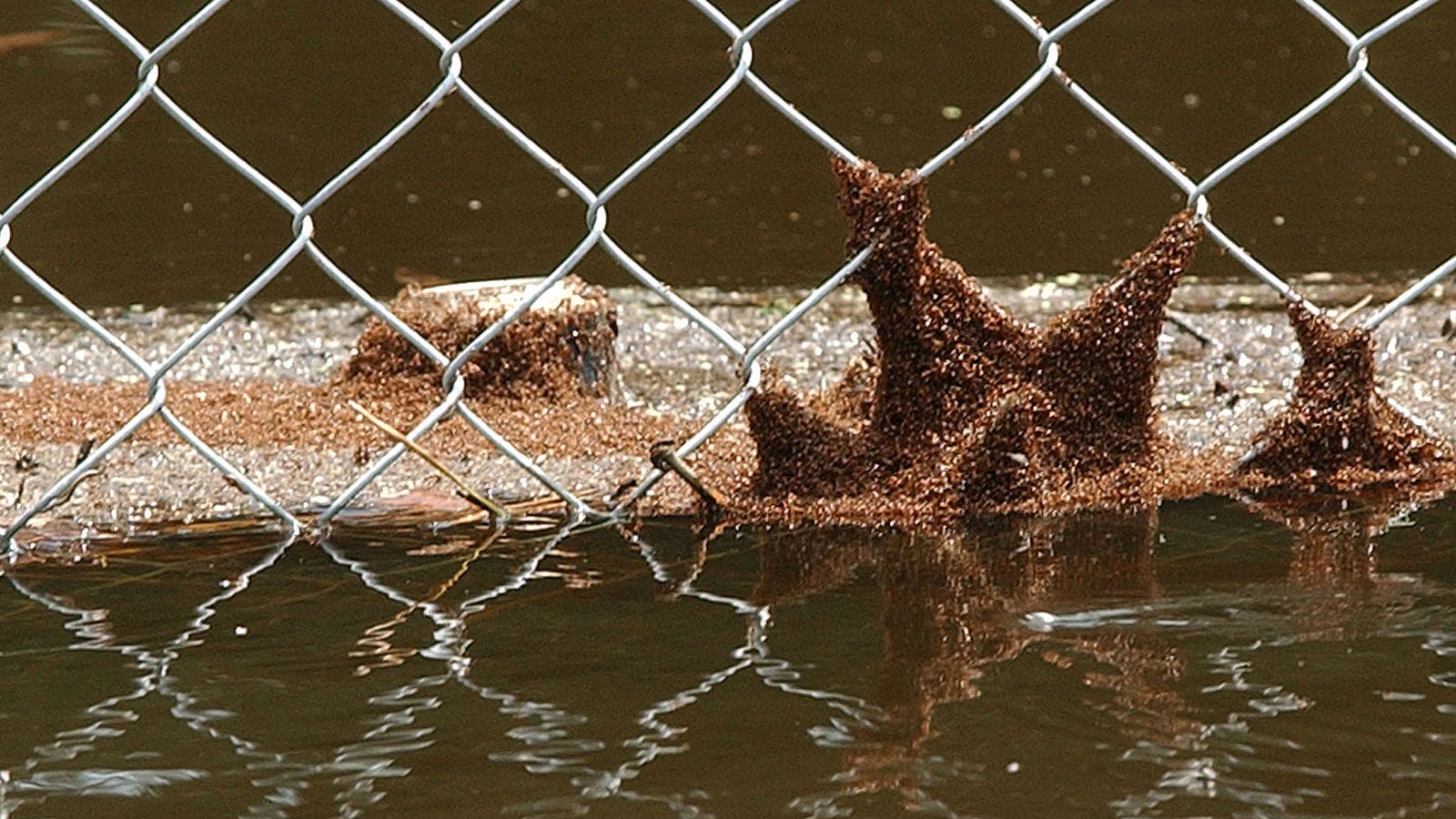Houston floods have created massive colonies of floating fire ants
As tropical storm Harvey continues to pound the Texas coast, flood waters are rising in Houston, carrying with them debris from wrecked structures throughout the region. Locals are also reporting on Twitter that colonies of fire ants have been flooded from their nests, forming massive rafts drifting aimlessly in the water.


As tropical storm Harvey continues to pound the Texas coast, flood waters are rising in Houston, carrying with them debris from wrecked structures throughout the region. Locals are also reporting on Twitter that colonies of fire ants have been flooded from their nests, forming massive rafts drifting aimlessly in the water.
This phenomenon has happened before in other areas that are home to the devilish insects—although notably not during Hurricane Katrina because the floods came on too quickly and drowned the colonies instead, as Wired reports.
Fire ants live in sand nests, and are common pests of the southern US. They live in colonies of the thousands, which can thrive for years if they’re not disrupted. Queens, which lay all the colony’s eggs, live for up to seven years, and multiple queens may live in the same colony. They are fiercely social animals, and when displaced, they cling to each other for dear life until they can find dry land. ”They spread out and hook their legs and feet together so they can form a tangled mass,” says Justin Schmidt, an entomologist at the University of Arizona. The inside of the colony, which contains the pupae and larvae, stays dry because of the ants’ waxy bodies, and they stay afloat because of the surface tension of the water.
They can then go weeks at a time without food because they’re cold-blooded, meaning they don’t have to use energy to keep their bodies at a certain temperature. Floating around as a raft takes almost no effort.
The fire ant rafts in the Houston area do pose “a definite threat [to anyone in the water],” Schmidt says. Schmidt is behind the Schmidt Sting Pain Index, which rates the pain from every stinging wasp, ant, and bee on a scale of one to four, all of which he willfully sought out himself. A single fire ant sting is only a one, burning temporarily and producing a white bump on the skin. (For context, a honeybee sting rates a two on the index.)
It’s rare for someone to get just one fire ant sting, though. Fire ants are aggressive, and a colony will quickly sting any potential threat first before ascertaining if it’s necessary. “If you’re walking around water and one of these rafts bumps onto you, chances are [the ants] are going to crawl up on you. You’re drier than they are,” says Schmidt.
“They’re just really unpleasant creatures,” Schmidt adds. Fire ants have been known to kill birds and small mice, although Schmidt says scientists aren’t sure if the insects user their venom to do it, or if colonies swarm and eat through the animals. No adults have ever died from fire ant stings, though their venom hasn’t been widely studied in labs so it’s hard to say what the lethal dose would be.
It’s best to avoid these floating colonies altogether, but if that’s impossible there are some ways you can lower the risk of getting hurt in a fire ant encounter. You can try drowning them by adding dish soap or detergents to the water around floating colonies. These soaps wear away ants’ waxy coatings, causing the ants to sink (although the soap could also end up polluting the water). If you find yourself without any kind of soap at hand, you can try to make waves with the water to splash the ants away, Molly Keck, an entomologist at Texas A&M AgriLife Extension Service, told the Verge.
If you do get stung, the most important thing to watch for is a severe allergic reaction. These are characterized by tongue swelling, shortness of breath, and sweating, and needs to be treated by a medical professional. Luckily, only about 1% of the population has a severe allergy to fire ant stings. Most who get stuck just have to keep the affected area clean and try not to scratch; fire ant stings should heal like any other insect bite.